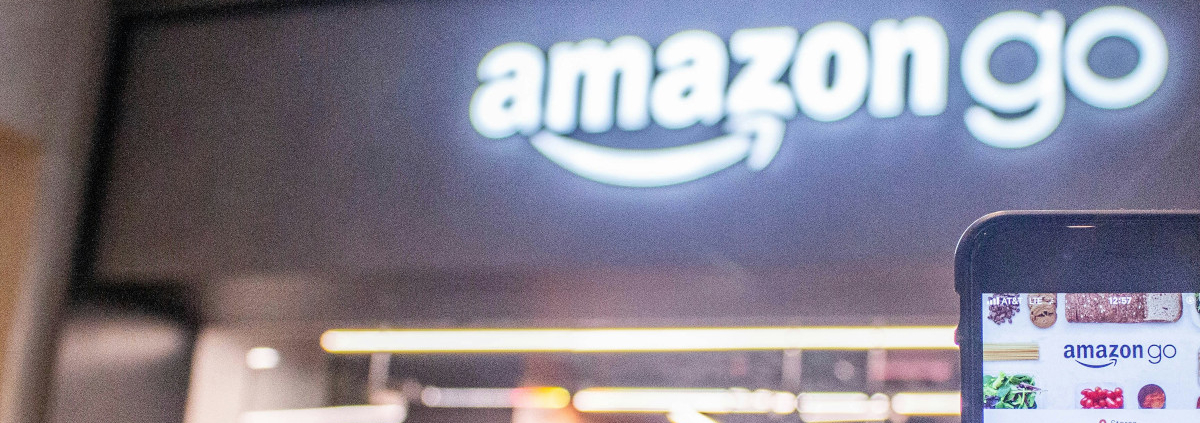Why Amazon Go Failed: Lessons for the Cashierless Future
Amazon Go, which launched in 2016, promised to revolutionize the retail experience with its “Just Walk Out” technology. Shoppers could simply grab what they needed, walk out, and have their purchases automatically charged to their accounts. It was an ambitious vision of the future of shopping. Yet, just a few years later, Amazon has scaled back its Go stores, closing locations in cities like Seattle, San Francisco, and New York. So, what went wrong with Amazon Go? Let’s break it down.
1. The High Cost of Innovation
Amazon Go’s technology was groundbreaking but also incredibly expensive to implement. Each store required a complex network of cameras, sensors, and AI-powered systems to track what customers picked up and automatically charge them. In addition to the initial setup costs, which could run into the millions of dollars, there were significant ongoing operational costs. Maintaining the infrastructure, constantly retraining AI models, and updating product catalogs proved to be a financial burden.
The cost of maintaining such an intricate system added up quickly. Each store had to be continually updated to handle new products, layout changes, and seasonal shifts in inventory. The ongoing need for manual adjustments to the system, including tagging products and retraining AI, created an operational nightmare that made the business model unsustainable at scale.
2. Scalability Issues
While Amazon Go’s technology worked well in smaller, more controlled environments, it struggled to scale for larger grocery stores. The system relied heavily on shelf sensors, which required a fixed store layout. In an industry where product placements are constantly changing, this created a significant problem. Even small changes to the layout could throw off the system, leading to errors in inventory tracking and customer charges.
For a model to succeed at scale, flexibility is crucial. Amazon Go’s rigid infrastructure didn’t allow for the kind of dynamic product placement that grocery stores require. Competitors like Grabango and AiFi, who use computer vision-based systems with overhead cameras, found success by offering more adaptable, cost-effective solutions.
3. Privacy and Customer Resistance
Despite the allure of a checkout-free experience, Amazon Go faced resistance from customers. For one, the process of downloading an app and linking payment information was seen as a barrier, especially for one-time visitors. Many shoppers were put off by the idea of using an app to gain entry, as it required additional effort compared to simply walking into a traditional store.
Privacy concerns also played a significant role in limiting Amazon Go’s adoption. The stores relied heavily on cameras and sensors to track every movement, raising questions about data collection and surveillance. Shoppers were wary of being constantly monitored, and with Amazon’s reputation for collecting vast amounts of consumer data, it wasn’t easy to convince customers that their information would be handled responsibly.
4. Theft and Shrinkage
Retail shrinkage—losses due to theft and errors—was a significant challenge for Amazon Go. The system was designed to minimize theft, but it wasn’t foolproof. Misidentifications, especially in crowded stores, led to revenue losses. Even a small error margin in a low-margin industry like grocery retail can result in significant financial losses. The AI was not always able to correctly attribute products to the right shopper, and this discrepancy compounded shrinkage problems.
In an environment where margins are razor-thin, even small amounts of theft or misidentification can make or break the viability of a store. As Amazon Go expanded, the operational costs associated with theft prevention and system accuracy became unsustainable.
5. Post-Pandemic Shifts in Consumer Behavior
The COVID-19 pandemic initially boosted interest in cashierless systems, as shoppers sought contactless and safer ways to shop. However, as restrictions eased, many customers returned to their pre-pandemic shopping habits. Traditional stores with hybrid checkout models—combining self-checkout kiosks with human cashiers—became more popular. These hybrid systems offered flexibility, allowing customers to choose the type of checkout they preferred. Amazon Go’s fully automated model, however, didn’t allow for this kind of adaptability.
As the world moved beyond the pandemic, customers were more comfortable returning to in-person shopping with a mix of automation and human interaction. The demand for fully cashierless systems waned as hybrid models gained traction.
6. Competitive Pressures
While Amazon Go was a pioneer in cashierless technology, it faced increasing competition from other companies that developed more scalable and cost-effective solutions. For example, Grabango’s computer vision system didn’t rely on shelf sensors, allowing it to be installed in a wider variety of stores. This flexibility made it more appealing to traditional retailers who wanted to experiment with cashierless technology without overhauling their entire store layout.
Amazon Go’s reliance on a rigid, sensor-heavy infrastructure made it harder to compete with these more adaptable systems. Retailers looking for a more affordable and flexible solution found Grabango’s model to be more practical and scalable.
7. The Importance of Hybrid Models
Amazon Go’s failure highlights the growing trend of hybrid models in retail. While the vision of fully cashierless stores is compelling, the reality is that most customers still appreciate a mix of automation and human interaction. Hybrid systems, which combine self-checkout options with traditional cashiered lanes, offer the best of both worlds. These systems can handle peak hours more effectively, provide a sense of security for customers who prefer human assistance, and still reduce the need for cashiers during quieter times.
As we move forward, the future of cashierless retail may lie in these hybrid models, which balance innovation with the familiarity and comfort of traditional shopping experiences.
Conclusion: A Cautionary Tale
Amazon Go’s ambitious venture into cashierless retail offers valuable lessons for the industry. While the technology holds immense promise, it is clear that the road to widespread adoption is fraught with challenges. High costs, scalability issues, privacy concerns, and operational complexities all contributed to the struggles Amazon faced in making Go a viable business model.
However, the concept of cashierless shopping is not dead. As the technology evolves and more adaptable, cost-effective solutions emerge, we can expect to see cashierless systems continue to grow in popularity. Amazon Go may have stumbled, but its experiment laid the groundwork for the next generation of cashierless and hybrid retail systems.







